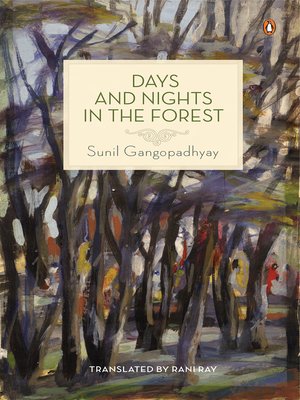
Sign up to save your library
With an OverDrive account, you can save your favorite libraries for at-a-glance information about availability. Find out more about OverDrive accounts.
Find this title in Libby, the library reading app by OverDrive.



Search for a digital library with this title
Title found at these libraries:
| Library Name | Distance |
|---|---|
| Loading... |
'He lay flat against the bed of wet earth andfallen leaves and stared at the sky. He felteuphoric, lying totally naked inside the forest.Baring the body had achieved baring of the soul.'Set in the turbulent 1960s, Days and Nights in the Forest (Aranyer Dinratri) was the second novel that a young Sunil Gangopadhyay wrote. Largely autobiographical, it is the story of a whimsical, impromptu journey that four city youths—Ashim, Sanjoy, Shekhar and Robi—take into the forests of Palamau.The four friends blithely imagine that their escapade into the wilderness will distance them from 'civilization' and take them closer to pristine nature. In reality, the solitude and austere majesty of the forest force them to look deeply into themselves and confront their all-too-human follies and 'civilized' foibles in new, unexpected and frightening ways. As they hear theominous sound of one tree after another being felled, encounter mercenary traders bent on milking the forest for all it is worth, and see the simmering unrest flickering in the eyes of the tribal inhabitants, they are compelled to look well beyond their own time to a plundered and violated world where the forest can never be a pastoral utopia—a world that is, inexorably and inescapably, our own. They return to Calcutta ineffably changed—sadder, older, more introspective.Days and Nights in the Forest was made into a celebrated film by Satyajit Ray very soon after its publication. Now translated for the first time from the original Bengali into English, this prescient and sophisticated novel remains as sharply relevant more than forty years after it was first written.







